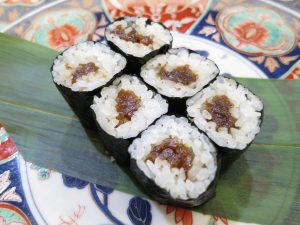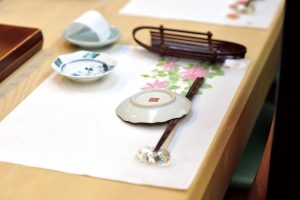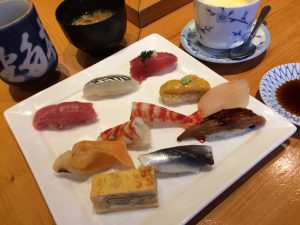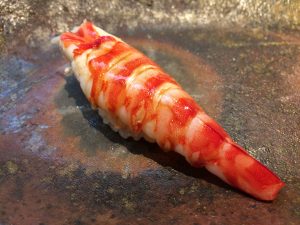How to eat sushi properly
During the Edo period when Nigiri sushi originated, it was sold in food stalls. People chose the sushi topping they wanted and satisfied their hunger. There is no such thing as the order of eating. In the first place, there are no rules about how to eat food.
The order in which the food is eaten is at the discretion of the eater.
You can eat Nigiri sushi in any order you like. We dare say that the order of eating dessert first, then the main meat or fish dish, and finally the appetizers is not a good one. Something similar to this even exists in Nigiri sushi.
Recently, Nigiri sushi has become a mainstream dish served in the Omakase course, in which the sushi chef has thought of the best order to eat the sushi. In this case, the sushi chef has thought of the best order in which to eat the sushi. The eater is left to his/her own choice.
Since when do we care about the order of eating?
This is due to the internationalization of Nigiri sushi. Everyone is taught how to eat a dish for the first time. And if you don’t know much about sushi topping, it is only natural that you would want to know more about it.
Generally, start by eating fish with a lighter flavor like white fish and move onto fish with a heavier flavor such as Toro, Uni, Japanese conger (Anago), and then Egg (Tamagoyaki). Finishing with Seaweed rolls at the end is a typical way.
The following menu is an Omakase style at the Former 3 Michelin star restaurant in Ginza. Since Sayori is offered, one can imagine that the season is early spring. This menu is composed of sushi topping that changes as the seasons change.
Begin with white fish?
Striped jack (Shima aji)
Akami
Chutoro
Otoro
Gizzard shad (Kohada)
Common orient clam (Nihamaguri)
Horse mackerel (Aji)
Kuruma prawn (Kuruma ebi)
Common octopus (Madako)
Mackerel (Saba)
Salmon roe (Ikura)
And Omelette (Tamagoyaki) comes last, just along the general order. Perhaps the way this owner serves might have become common.
 To maximize each flavor of toppings, have some pickled ginger or hot tea between different types of sushi to cleanse your palate. You don’t have to stick to the specific order, though. It seems like having customers eat freely is the idea held in common by most sushi chefs. However, indeed, you won’t be able to taste the next flavor after eating something rather sweet. Japanese conger (Anago), Egg (Tamagoyaki), and Kanpyoumaki should be eaten at the end.
To maximize each flavor of toppings, have some pickled ginger or hot tea between different types of sushi to cleanse your palate. You don’t have to stick to the specific order, though. It seems like having customers eat freely is the idea held in common by most sushi chefs. However, indeed, you won’t be able to taste the next flavor after eating something rather sweet. Japanese conger (Anago), Egg (Tamagoyaki), and Kanpyoumaki should be eaten at the end.
[sc_apply url=”https://sushiuniversity.jp/apply/”]
We hope this information will be helpful.

Revision date: January 29, 2024
Share this article
 The sushi restaurant is unusual in that the customer sitting at the counter can see the seafood (neta) from which individual servings will be made, and can watch the chef deftly perform his art while enjoying lively conversation. Sushi restaurants also differ from other restaurants when it comes to menus.
The sushi restaurant is unusual in that the customer sitting at the counter can see the seafood (neta) from which individual servings will be made, and can watch the chef deftly perform his art while enjoying lively conversation. Sushi restaurants also differ from other restaurants when it comes to menus. If the customer is inclined to worry about what the bill will come to, he orders
If the customer is inclined to worry about what the bill will come to, he orders  People at the counter most often order
People at the counter most often order